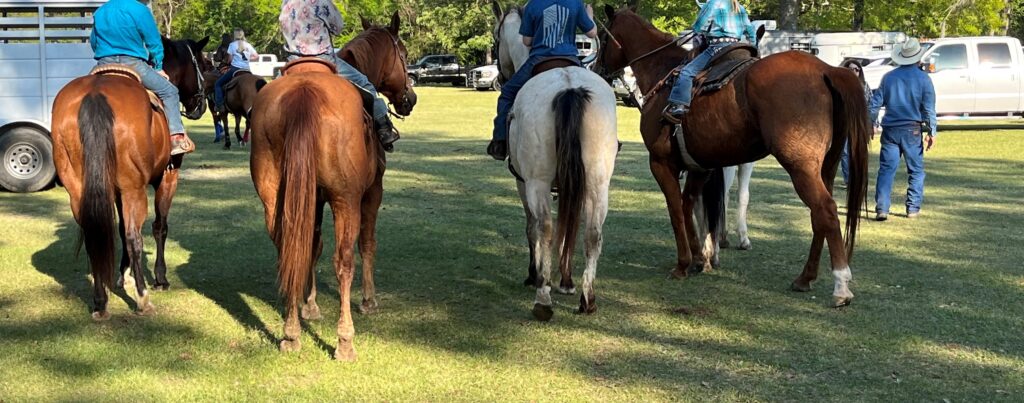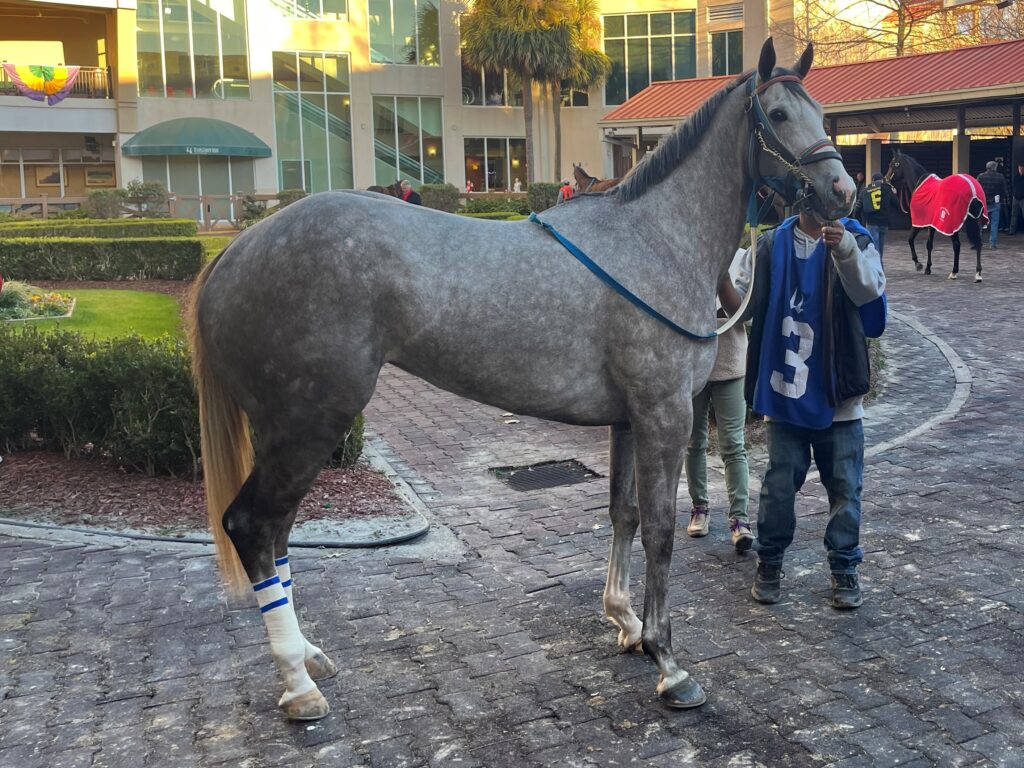Last updated: October 23, 2023
I was surprised when I learned that my friend, who has tons of experience with horses, said he only likes certain color horses. He believes color is a factor in evaluating a horse’s physical ability and strengths; this made me wonder if his theory holds any weight at all.
The best color for a horse depends on its discipline. In Western riding, sorrels, bays, and buckskins are preferred; in English riding disciplines, bay, grey, and chestnut colors are considered the best – but the rarest color across all breeds is true-white or brindle.
To a layman, a horse’s color may simply be a cosmetic detail. But ask any equestrian, and they will likely tell you that a horse’s color can determine several things.
In this guide, we will discuss:
- Horse colors and performance
- The best-looking color patterns on horses
- Most desirable horse color
- Best color for racehorses. Does color translate into winning? Most successful horse color in the Triple Crown Kentucky derby.
- Rarest horse color.

Horse colors and performance.
Equestrians have long attributed specific traits or characteristics to horses of particular colors. The authors of Equine Color Genetics, D. Phillip Spoonenberg, and Rebecca Bellone agree.
Their research found a correlation between horse colors and how they react in certain situations. For example, lighter-colored horses tend to be less lively than darker ones; this could impact performance in races or sporting events.
When you’re showing a horse with unique coloring or markings, it might have an advantage because judges will be able to spot them easily among other competitors. It’s great if they do well but not so good when they make mistakes!
The color of a horse’s coat has been shown to affect its performance in dressage. For example, dark bay and black horses seem to do really well.
Their success could be due to their muscle tone standing out, or it may be because they are genetically more inclined towards this riding style.
Best looking color patterns on horses
The American Paint Horse is considered to have the most beautiful color patterns. The APHA or the American Paint Horse Association even requires that a horse have at least one spot to be registered under their APHA aegis.
Most Paint horses have white spots on dark coats, while others have dark spots on white coats. A purebred Paint horse can have any coat color like black, brown, buckskin, or chestnut.
The tobiano color pattern in the Paint horse breed is one of the most popular patterns. It consists of white extending on the back with regular spots, white stockings, and a blaze or star on the face.
Overo is another in-demand pattern in Paint horses. This consists of irregular splashy white markings not extending across the back, at least one colored leg, a tail in a single color, and a bald or bonnet face.
Other than the American Paint horse, even the Appaloosa breed has beautifully patterned coats. In this breed, the blanket pattern is the most popular one.
It consists of solid white covering the hip area against a contrasting base. For its appearance, the blanket pattern is also called a snowcap. The Appaloosa Horse Club of America recognizes six other gorgeous patterns.
For American Indians, both these patterned horse breeds were invaluable because they blended well with the surroundings, which helped them sneak up on their enemies. Today, both breeds – Paint horse, and the Appaloosa is among the top 10 most popular American Horse Breeds.
What is the most desirable horse color?
Bay – which can range from dull red to yellow to brown – is the most prized horse color. Other desirable horse colors are chestnut, dark brown, and black.
Horses of these colors often fetch a higher price in the market than those considered as less desirable – white, light gray, light sorrel, cream-colored, and spotted – are some of the less desirable colors in horses.
A dark bay with no white and a black tail, mane, and legs from the knees and hocks down is generally conceded by horse fanciers as the most beautiful color in horses. Chestnut and dark brown might be regarded as next in order in this respect.

What is the best color for racehorses?
The American Jockey Club allows only the following colors in Thoroughbred racehorses:
As the old saying goes, you can’t have a good horse of a bad color! There are good and bad horses of every color. In general, certain colors in horses indicate deficit breeding. Naturally, such animals lack the power of endurance.
Although the American Jockey Association admits black horses, it has been seen that black horses are often sluggish. They are also more susceptible to vice, blindness, and disease than horses of other colors. It is little wonder that there are many worthless black horses in every part of the country.
Chestnut is the dominant color in racehorses. These horses are very well-bred and are the color of the world’s most famous racehorse, Secretariat, nicknamed “Big Red.”
A horse is considered chestnut-colored if it is reddish-brown all over without black points. A chestnut’s tail and mane may be the same color as its body or a shade lighter or darker, but never black.
Does color translate to winning races?
Several studies have shown us a link between horse color, genetics, and race performance. Researchers have even identified the gene that is known to affect race performance in horses.
Typically, wining horses have a mealy coloring, lighter muzzle, belly area, eyes, and flank. I only have one rule for horse colors and racing; I never bet on gray horses.
I know that I’m not the best handicapper, but when it comes to gray horses, they never seem to win. Bay is my lucky color, and it just so happens to be the color of our newest racehorse.
What is the most successful horse color in the Kentucky Derby?
Horses with bay coats have been the most successful at the Kentucky Derby. They have taken home the crown 58 times. Chestnut-colored horses are runner-ups with 48 victories, while brown horses have won over 17 times. About 8 Gray horses have won the Kentucky Derby.
In short, bay, chestnut, brown, and gray are the most successful colors in most horse races.

Rarest Horse Colors
Brindle and white-colored horses are rare, especially the ‘true white’ horses having the ‘W’ gene. In fact, white horses are mythical creatures. Pegasus, the flying horse, was pure white.
Some people call white horses albinos, but not all white horses are albinos. Albino animals lack pigment. And other people also consider gray-colored horses white.
In reality, they are genetically grey horses that have faded to white as they age. Some white horses have a pinkish tinge to their skin and blue eyes. These are called cremello horses. You could also have pinto horses with white patches covering most of their bodies.
A truly white horse is white all over – from the tips of its ears to the end of its tail. It may have pinkish skin and dark eyes.
Brindle horses are extremely rare. Their coats contain a textured appearance, similar to that of an Appaloosa horse’s coat and drippy striping. I wrote an article all about brindle horses that explains the genetics and reasons horses end up with this unique coat pattern.
Conclusion
Horses come in beautiful colors and patterns. The Paint horse and Appaloosa breeds have gorgeous patterns. The Tobiano, Overo, and Blanket/Snowcap patterns are popular among these.
The most desirable horse color is bay, followed by chestnut, dark brown, and black. Among racehorses, there are many successful colors: bay, chestnut, and brown horses win many races. Pure white is the rarest horse color.
For more information on horse colors, take a look at this YouTube video.
FAQs
What are the five most common horse colors and patterns?
The five most common horse colors are Bay, chestnut, black, grey, and dun. Regarding patterns, the most common are Roan, Tobiano, Overo, Dappled, and Appaloosa.
What is a blonde-colored horse called?
A blonde horse, called a palomino, comes in many shades, from light-blonde to deep gold.
Is brindle rare in horses?
The brindle pattern is rare in horses. It stands out from other types of horses and can have various shades of stripes. A horse with striping all over is called Dun Brindle.
How rare are blue roans?
Blue roans are not rare; there are many blue roan quarter horses and other breeds. Check out my article on blue roan horses to learn more about this coat color.
What is the Sabino horse pattern?
The sabino pattern is a white spotting that typically affects the horse’s legs and belly, including roaning and blaze markings. The edges of the white are often feathery.

About the Author: Miles Henry
Lifelong Horseman | Racehorse Owner | Published Author
Miles Henry brings over 25 years of hands-on experience training and owning Thoroughbred racehorses. Raised with Quarter Horses and Appaloosas, he’s spent a lifetime learning from horses—on the track, in the barn, and in the field. Today, he runs a small but successful racing stable in Louisiana and shares real-world insights on HorseRacingSense.com, helping horse owners, fans, and bettors navigate the sport with confidence.
📚 Books: View Miles’s books on Amazon »
🎧 Podcast Guest: Animal Tales Ep. 32 |
YouTube Interview
📩 Newsletter: Sign up for racing tips and horse care advice »
🔗 Follow Miles:
Twitter |
Facebook |
YouTube


